
INVICTUS
INVICTUS: Innovative Volumetric Capture and Editing Tools for Ubiquitous Storytelling
October 2020 – December 2022

KIVI
KIVI: AI-based Generation of interactive Volumetric Assets
October 2020 – September 2022

D4Fly
D4Fly: Detecting Document frauD and iDentity on the fly
September 2019 – August 2022


Research Alliance Cultural Heritage
1. Phase: January 2016 - December 2018
2. Phase: December 2019 – November 2022
Funded by Fraunhofer Directorate, Prof. Raimund Neugebauer.

Virtual LiVe
Virtualization of Live Events via Audiovisual Immersionen
January 2021 – December 2021
COMPASS
Comprehensive Surgical Landscape Guidance System for Immersive Assistance in Minimally-invasive and Microscopic Interventions
September 2018 - September 2021
digitalTWIN
Digital Tools and Workflow Integration for Building Lifecycles
March 2018 – February 2021

3D-Finder
Robuste generische 3D-Gesichtserfassung für Authentifizierung und Identitätsprüfung
July 2017- January 2021
Read more

TeleSTAR
Telepresence for Surgical Assistance and Training using Augmented Reality
January 2020 - December 2020

SS3D++
SS3D++: Single Sensor 3D ++
January 2020 – December 2020
Content4All
Personalised Content Creation for the Deaf Community in a Connected Digital Single Market
September 2017 - November 2020
LZDV
The Berlin Center for Digital Transformation
Phase I: July 2016 – June 2018
Phase II: July 2018 – June 2020
EASY-COHMO
Ergonomics Assistance Systems for contactless Human-Machine-Operation
January 2017 – December 2019
VReha
Virtual worlds for digital diagnostics and cognitive rehabilitation
December 2017 – November 2019

PersonVR
Embedding of real persons in Virtual Reality productions using 3D videoprocessing
July 2017 – June 2019
ANANAS
Anomaly detection to prevent attacks on facial recognition systems
June 2016 – May 2019
3D-LivingLab
Demonstrator 3D-LivingLab for the 3Dsensation research alliance
March 2017 – February 2019
MEF AuWiS
Audio-Visual Capturing and Reproduction of Traffic Noise for the Simulation of Noise Mitigation Methods
January 2017 – December 2018
REPLICATE
cReative-asset harvEsting PipeLine to Inspire Collective-AuThoring and Experimentation
January 2016 – December 2018
M3D
Mobile 3D Capturing and 3D Printing for Industrial Applications
April 2016 – September 2018
MEF ESMobS
Self-research project for medium-sized companies: Even layered Structures for Micro optics of broad imaging Systems
January 2016 – December 2017

VENTURI
October 2011 – September 2014
To date, convincing AR has only been demonstrated on small mock-ups in controlled spaces; we haven’t yet seen key conditions being met to make AR a booming technology: seamless persistence and pervasiveness. VENTURI addresses such issues, creating a user appropriate, contextually aware AR system, through a seamless integration of core technologies and applications on a state-of-the-art mobile platform. VENTURI will exploit, optimize and extend current and next generation mobile platforms; verifying platform and QoE performance through life-enriching use-cases and applications to ensure device-to-user continuity.
SCENE
October 2011 – September 2014
SCENE will develop novel scene representations for digital media that go beyond the ability of either sample based (video) or model-based (CGI) methods to create and deliver richer media experiences. The SCENE representation and its associated tools will make it possible to capture 3D video, combine video seamlessly with CGI, manipulate and deliver it to either 2D or 3D platforms in either linear or interactive form.

EMC²
October 2011 – February 2014
The 3DLife consortium partners committed on building upon the project’s collaborative activities and establishing a sustainable European Competence Centre, namely Excellence in Media Computing and Communication (EMC²). Within the scope of EMC², 3DLife will promote additional collaborative activities such as an Open Call for Fellowships a yearly Grand Challenge, and a series of Distinguished Lectures.

REVERIE
September 2011 - May 2015
Reverie is a Large Scale Integrating Project funded by the European Union. The main objective of Reverie is to develop an advanced framework for immersive media capturing, representation, encoding and semi-automated collaborative content production, as well as transmission and adaptation to heterogeneous displays as a key instrument to push social networking towards the next logical step in its evolution: to immersive collaborative environments that support realistic inter-personal communication.
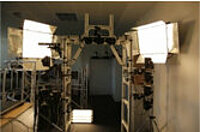
FreeFace
June 2011 – December 2013
FreeFace will develop a system for assisting the visual authentication of persons employing novel security documents which can store 3D representations of the human head. A person passing a security gate will be recorded by multiple cameras and a 3D representation of the person’s head will be created. Based on this representation, different types of queries such as pose and lighting adaption of either the generated or the stored 3D data will ease manual as well as automatic authentication.

Camera deshaking for endoscopic video
June 2011– February 2011
Endoscopic videokymography is a method for visualizing the motion of the plica vocalis (vocal folds) for medical diagnosis with time slice images from endoscopic video. The diagnostic interpretability of a kymogram deteriorates if camera motion interferes with vocal fold motion, which is hard to avoid in practice. For XION GmbH, a manufacturer of endoscopic systems, we developed an algorithm for compensating strong camera-to-scene motion in endoscopic video. Our approach is robust to low image quality, optimized to work with highly nonrigid scenes, and significantly improves the quality of vocal fold kymograms.
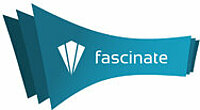
FascinatE
February 2010 – July 2013
The FascinatE (Format-Agnostic SCript-based INterAcTive Experience) project will develop a system to allow end-users to interactively view and navigate around an ultra-high resolution video panorama showing a live event, with the accompanying audio automatically changing to match the selected view. The output will be adapted to their particular kind of device, covering anything from a mobile handset to an immersive panoramic display. At the production side, this requires the development of new audio and video capture systems, and scripting systems to control the shot framing options presented to the viewer. Intelligent networks with processing components will be needed to repurpose the content to suit different device types and framing selections, and user terminals supporting innovative interaction methods will be needed to allow viewers to control and display the content.
Co-funded by the European Commission's Seventh Framework Programme
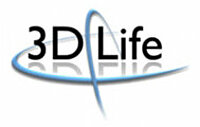
3DLife
January 2010 – June 2013
3DLife is a funded by the European Union research project, a Network of Excellence (NoE), which aims at integrating research that is currently conducted by leading European research groups in the field of Media Internet. 3DLife's ultimate target is to lay the foundations of a European Competence Centre under the name "Excellence in Media Computing & Communication" or simply EMC². Collaboration is in the core of the 3DLife Network of Excellence.
- Computer Vision & Graphics Group
- www.3dlife-noe.eu/3DLife
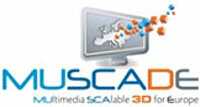
MUSCADE
January 2010 – December 2012
MUSCADE (Multimedia Scalable 3D for Europe) will create major innovations in the fields of production equipment and tools, production, transmission and coding formats allowing technology independent adaptation to any 3D display and transmission of multiview signals while not exceeding double the data rate of monoscopic TV, and robust transmission schemes for 3DTV over all existing and future broadcast channels.
Co-funded by the European Commission's Seventh Framework Programme.

Cloud Rendering
December 2009 – August 2010
In the project CloudRendering, we investigated methods to efficiently encode synthetically produced image sequences in cloud computing environments, enabling interactive 3D graphics applications on computationally weak end devices. One goal was to investigate possibilities to speedup the encoding process by exploiting different levels of parallelism: SIMD, multi-core CPUs/GPUs and multiple connected computers. Additional speedup was achieved by exploiting knowledge from the synthetic nature of the images paired with access to the 3D image generation machinery. The study was performed for Alcatel-Lucent.

AVATecH
June 2009 – May 2012
The goal of AVATecH - Advancing Video Audio Technology in Humanities Research - is to investigate and develop technology for semi-automatic annotation of audio and video recordings used in humanities research. Detectors that will be available via interactive annotation tools and also via batch processing can help for example with chunking, tagging, annotation and search.
Joint Max-Planck/Fraunhofer project
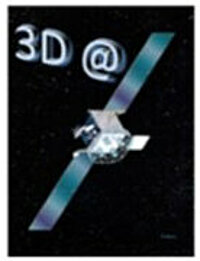
3D@Sat
June 2009 – July 2011
3D@SAT will review and investigate the potential of future 3D Multiview (MVV) / Free viewpoint Video (FVV) technologies, build up a simulation system for 3D services over satellite and disseminate its findings to relevant fora (e.g. DVB 3D-SM, DVB TM–AVC, ITU-T/VCEG, ISO/MPEG, SMPTE, 3D@Home etc.).
Funded by the European Space Agency (ESA).
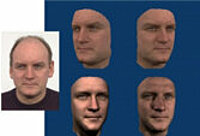
Fraunhofer Secure Identity Innovation Cluster
January 2009 – December 2011
The Fraunhofer Secure Identity Innovation Cluster is an alliance of five Fraunhofer Institutes, five universities and 12 private sector companies, supported by the federal states of Berlin and Brandenburg. The aim of this joint research & development project is to deliver technologies, processes and products that enable clear and unambiguous identification of persons, objects and intellectual property both in the real and the virtual world, thus enabling owners and users of identity to have individual control over clearly defined, recognizable identities. HHI is working on the passive 3D capture of faces for security documents of the future.
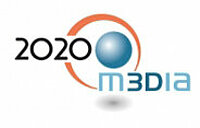
2020 3D Media
March 2008 – February 2012
2020 3D Media will research, develop and demonstrate novel forms of compelling entertainment experiences based on new technologies for the capture, production, networked distribution and display of three-dimensional sound and images.
Co-funded by the European Commission's Seventh Framework Programme.

PRIME
March 2008 – February 2011
Eight leading firms and research institutes have formed a consortium in order to develop trend-setting techniques and business-models for the implementation of 3D-media into cinema, TV and video games. Our project entitled "PRIME PRoduction- and Projection-Techniques for Immersive MEdia-" is state-aided by the German Federal Ministry for Economy and Technology (BMWi).
Co-funded by the German Federal Ministry for Economy and Technology (BMWi).
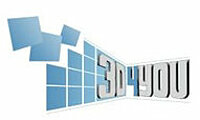
3D4YOU
February 2008 – January 2011
The 3D4YOU project will develop the key elements of a practical 3D television system, particularly, the definition of a 3D delivery format and guidelines for a 3D content creation process. The project will develop 3D capture techniques, convert captured content for broadcasting and develop 3D coding for delivery via broadcast, i.e. suitable to transmit and make public.
Co-funded by the European Commission's Seventh Framework Programme.

3DPresence
January 2008 – June 2010
The 3DPresence project will implement a multi-party, high-end 3D videoconferencing concept that will tackle the problem of transmitting the feeling of physical presence in real-time to multiple remote locations in a transparent and natural way. More briefly, 3DPresence does research and implements one of the very first true 3D Telepresence systems. In order to realize this objective, 3D Presence will go beyond the current state of the art by emphasizing the transmission, efficient coding and accurate representation of physical presence cues such as multiple user (auto)stereopsis, multi-party eye contact and multi-party gesture-based interaction.
Co-funded by the European Commission's Seventh Framework Programme.
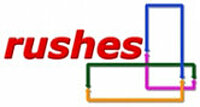
RUSHES
February 2007 – July 2009
The overall aim of the RUSHES (Retrieval of multimedia Semantic units for enhanced reusability) project is to design, implement, and validate a system for indexing, accessing and delivering raw, unedited audio-visual footage known in broadcasting industry as "rushes". This system will have its viability tested by means of trials. The goal is to promote the reuse of such material, and especially its content in the production of new multimedia assets by offering semantic media search capabilities.
Co-funded by the European Commission's Sixth Framework Programme












